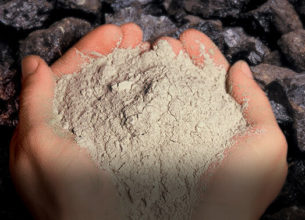Fly Ash
Fly Ash
Why in News?
- The Union Ministry of Environment, Forests and Climate Change (MoEF&CC) has recently clarified the compliance dates for the complete utilisation of fly ash for Thermal Power Plants (TPP) in a new notification.
Highlights
- Fly ash is an unwanted unburnt residue of coal combustion in a coal thermal power plant.
- It is emitted along with flue gases during the burning of coal in a furnace and collected using the electrostatic precipitators.
- The fly ash collected with the help of precipitators is converted into a wet slurry to minimise fugitive dust emissions.
- It Is then transported to the scientifically designed ash ponds through slurry pipelines.
- Composition of fly ash depends upon the composition of coal being burnt. It may contain Beryllium, Arsenic, unburnt Carbon, Silicon Oxides, Dioxins, aluminium oxide, ferric oxide, calcium oxide, etc.
- These elements are severe environmental pollutants.
- Resemble Portland cement but is chemically different.
- Portland cement is a binding material in the form of a finely ground powder that is manufactured by burning and grinding a mixture of limestone and clay.
- Its chemical composition includes calcium silicates, calcium aluminate and calcium aluminoferrite.
- Exhibit cementitious properties.
- A cementitious material is one that hardens when mixed with water
- Fly ash particles are toxic air pollutants. They can trigger heart disease, cancer, respiratory diseases and stroke.
- When combined with water they cause leaching of heavy metals in ground water.
- It also pollutes the soil, and affects the root development system of trees.
- Gross under-utilisation of this by-product over the years has led to the accumulation of 1,670 million tonnes of fly ash according to the Summary of Ash Generation and Utilisation during 2020-2021 by the Joint Committee earlier constituted by the NGT.







